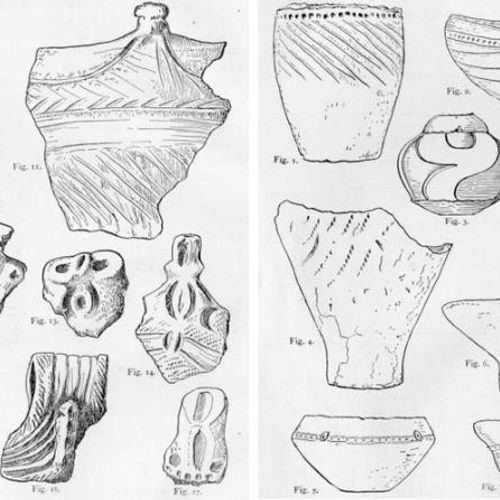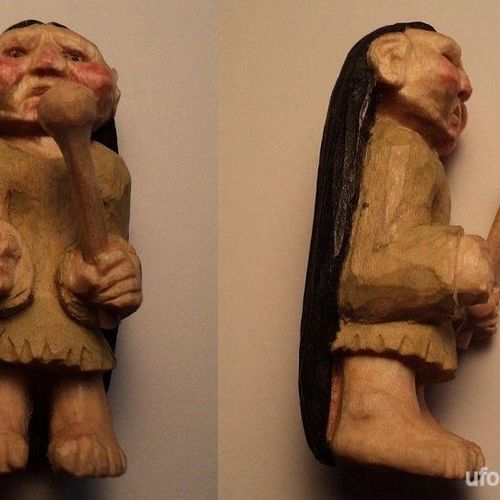
| Added | Tue, 25/09/2018 |
| Источники | |
| Дата публикации | Tue, 25/09/2018
|
| Феномены |
On the Northern Japanese island of Hokkaido in the local legends of the Ainu is told about the little men Koropokkur (koropokkuru) who lived there even before the advent of man. The folk are sometimes referred to as Pokerguru Koro (Koro Pokunguru) or Tsuchigumo (Tsuchigumo) and the most common name Koropokkur be translated as "the people who live under the leaf of the burdock," and points directly to the very small size of these creatures.
Very popular in Japan image Koropokkur as man, holding a burdock leaf and sheltering them from the rain like an umbrella. Sometimes legends are told of small creatures that one leaf of burdock could fit a whole family. In this known history, where Koropokkur had growth comparable with the growth of human children, that is, about 60-80 cm, But irrespective of different places of the stories about these men, always focus on their very little growth. And it is possible that this trait is the only thing left in these legends are true, about the existence of this mysterious tribe.
In addition to small stature are also often told that Koropokkur was pretty primitive and rough folk, and the head they were very large with large flattened nose and bushy eyebrows. Sometimes referred to reddish skin, but very often it is said that they were very hairy and quite smelly. Interestingly, the Japanese and the Ainu in the early centuries was often described as "hairy and smelly bullies, like animals."
However there are moments which can determine that Koropokkur were much closer to humans than animals. It is mentioned that they used stone tools and knew how to sculpt beautiful ceramics. Moreover, the Ainu pottery is not engaged I think.
According to the legends of the Ainu people, tiny humans were afraid of people and always tried to hide them in the woods. Nevertheless they from time to time conducted exchange trade with the Ainu, and always at night. And for many centuries the Ainu and Koropokkur peacefully coexisted with each other, until one day they fell in a brutal war and almost all Koropokkur were destroyed, and survivors somewhere expelled. It is extremely difficult to find in those stories at least something substantial and even more to find the real evidence of the existence of the folk.
However, something archaeologists have. So in the settlements of the Ainu were found strange dugouts, which were quite unlike the traditional thatched house of the Ainu. Also found were stone tools, too small to use their normal growth.
Another mystery made the archaeologist Edward Morse, who in 1877 was one of the first in Japan began excavations. He found a plot of Omori shell many ancient sherds that did not fit into the culture of the Ainu people.
Published in 1879, his work, Morse wrote that the shards belong to an unknown Neolithic culture that existed before the arrival of the Hokkaido Ainu. Morse's work was continued by his disciple Tsuboi Chogogo and it was he who suggested that the tiny guns, small dugouts and shards of pottery from the work of one and the same tribe, and this tribe was the legendary Koropokkur.
Nowadays, some of the researchers of culture of Hokkaido also stick to this version and I think that tiny people could be the descendants of the diminutive "hobbit" from the Indonesian island of Flores.
Translated by «Yandex.Translator»
Sketches of archaeological finds
Translated by «Yandex.Translator»
Новости со схожими феноменами
Log in or register to post comments



